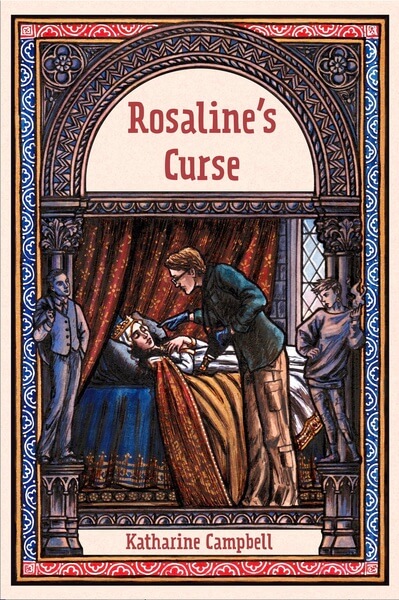Genre
Audience
Author’s Worldview
Catholic
Year Published
2022
Themes
Reviewed by
If Sleeping Beauty woke up in 2017, you’d basically have Rosaline’s Curse!
Waking from an enchanted sleep to find herself in 2017, thirteenth-century princess Rosaline is jubilant—her evil suitor will be long dead! Except he isn’t. Convinced that ‘Mr. King’ continues to pursue her because she has been cursed for helping her brother to steal the bones of a saint, Rosaline embarks on a quest to find the bones and return them to their rightful tomb. Student anthropologist Mark, a regular twenty-first century guy, isn’t convinced about the curse—but he wants to help her anyway. Can they defeat the evil fairy and figure out true love along the way?
This book is a sequel to Love, Treachery, and Other Terrors, but could easily be read on its own. It combines the witty humor of the first book with, if anything, an even more entertaining plot.
The novel explores freedom and responsibility, as well as truth and, especially, what it really means to love someone. Rosaline takes to twenty-first century life with considerable ease, yet her Catholicism remains the bedrock of her worldview. However, Mark’s worldview is secular, and Christianity plays a less overt role in this book than in the first one.
My only criticism of the book is that the blurb doesn’t make it clear that it’s a sequel to the first book, and leaves one thinking that it’s about demigods instead of fairies. The first few paragraphs of the book clear up both issues, but I might not have picked up the book at all if I hadn’t enjoyed the author’s other book so much.
This book is suitable for adult and New Adult readers, and for most teens. However, parents of younger or sheltered teens may wish to pre-read, since one character does engage in an act of (off-stage) sexual immorality. This act is entirely in keeping with his worldview and is well handled within the book. In fact, it leads the heroine to a profound reflection about how she knows the true faith but doesn’t try that hard to keep to it, but the other character doesn’t, and yet tries far harder to follow the only code he knows, however broken it may be. Well-catechized teens who identify with Rosaline’s faith will have no problems with this incident. However, teens with a weaker faith who might be drawn to identify more with the character with the modern secular beliefs might not draw such a beneficial lesson from it, hence parental guidance is advised.
Both secular and religious readers would enjoy this book, since the faith element is discreet and balanced by Mark’s agnosticism. Although the bones of a saint feature prominently in the plot, there is no discussion of relics or anything likely to offend Protestant readers.
The climax has a touch of Deus ex machina about it, but it is dramatically stronger than that of the previous book, and the subsequent concluding action leaves the reader happy and satisfied.
Once again, this witty fairy-tale-meets-contemporary-fantasy touches on serious moral points without becoming too dark or too saccharine.



